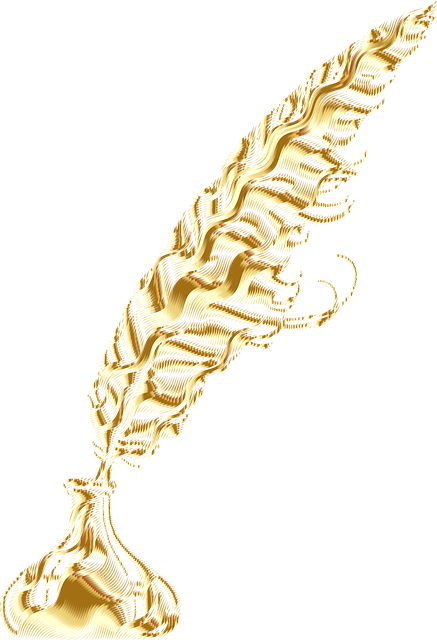To invest in gold and other precious metals within a Roth IRA, you must set up a self-directed Roth IRA account with a custodian specialized in alternative assets like physical gold, silver, platinum, and palladium. These investments must meet the IRS standards for IRA-eligible assets. You fund this account through a rollover or contribution, then invest in approved precious metals through a rare coin dealer, storing them securely at an approved depository. The metals must be IRS-approved with specific purity levels, and you must comply with annual reporting and ongoing due diligence to manage your investment effectively. A Roth IRA conversion allows for tax-free growth on gold investments if all IRS guidelines are followed, including the five-year holding rule to avoid penalties. Consulting with a financial advisor or tax professional well-versed in these investments is recommended for navigating tax implications and maintaining compliance throughout the investment period.
Exploring the transformative journey of converting a Roth IRA into gold? This article demystifies the process. Initially, one must set up a self-directed Roth IRA with a focus on precious metals. This financial tool expands your investment portfolio beyond conventional stocks and bonds, offering a unique avenue to include priority gold complaints. We’ll guide you through the selection of qualified metals, navigate the tax considerations, and detail each step for a seamless conversion from a traditional IRA to a Roth IRA for gold investments. Additionally, we’ll highlight the importance of selecting a trustee with expertise in gold Roth IRAs to ensure compliance and optimize your investment strategy.
- Setting Up a Self-Directed Roth IRA for Precious Metals Investment
- Qualified Precious Metals for Roth IRA Investment
- Understanding the Tax Implications of Converting to a Gold Roth IRA
- Steps to Convert Traditional IRA to Roth IRA for Gold Investment
- Choosing a Trustee Specializing in Gold Roth IRAs
Setting Up a Self-Directed Roth IRA for Precious Metals Investment

To begin the process of converting your Roth IRA to an investment in gold and other precious metals, it is essential to set up a self-directed Roth IRA that accommodates such assets. This involves selecting a custodian that specializes in alternative investments, including physical gold, silver, platinum, and palladium coins or bars that meet the Internal Revenue Service (IRS) standards for IRA investments. Ensure that the custodian you choose is reputable, experienced in precious metals, and compliant with IRS regulations.
Once you have established a self-directed Roth IRA with an approved custodian, the next step is to fund your new account. You can either roll over an existing Roth IRA or make a fresh contribution if you are within the annual contribution limits set by the IRS. After funding, you may then proceed to identify and purchase eligible precious metals through a rare coin dealer that your custodian approves. The custodian will coordinate the transaction, ensuring that the metals are delivered to an approved depository in your name. It’s crucial to adhere to all IRS guidelines regarding purity and storage to maintain the tax-advantaged status of your Roth IRA. Regularly reviewing your investment choices and staying informed about market trends and regulatory changes is also key to managing a self-directed Roth IRA focused on precious metals.
Qualified Precious Metals for Roth IRA Investment

When considering an investment in gold through a Roth IRA, it’s crucial to focus on the IRS-approved precious metals that qualify for this type of retirement account. The Internal Revenue Service (IRS) stipulates that for a Roth IRA to hold physical gold or other precious metals, these metals must meet certain purity standards. For gold, this typically means investments in gold bars or coins that are 99.5% pure or higher. Qualified precious metals include:
1. Gold bullion and gold coins, which can be in the form of American Gold Eagles, Canadian Gold Maple Leafs, Austrian Gold Philharmonics, and South African Krugerrands, to name a few. These are commonly recognized as meeting the IRS requirements and are readily available through reputable dealers.
2. Silver, platinum, and palladium also have their own set of bullion and coins that meet the purity criteria for inclusion in a Roth IRA. For silver, this includes items like the American Silver Eagle or the Canadian Silver Maple Leaf, each containing 99.9% pure silver. Platinum and palladium investments must be equally pure, with options like the Canadian Platinum Maple Leaf (99% platinum) and the only palladium bullion coin recognized by the IRS, the Canadian Palladium Maple Leaf (99.95% pure palladium).
Investors looking to diversify their Roth IRA with these precious metals must work with a custodian or trustee that specializes in self-directed IRAs and is approved to handle these types of investments. This ensures compliance with the IRS rules, safeguarding both the investor’s assets and the integrity of the Roth IRA account.
Understanding the Tax Implications of Converting to a Gold Roth IRA

When considering the conversion of a traditional Roth IRA to one that allows for investment in physical gold and other precious metals, it’s crucial to understand the tax implications involved. The Internal Revenue Service (IRS) maintains stringent rules regarding the types of assets held within a Roth IRA. Upon converting to a self-directed Roth IRA that permits such investments, the process itself is not subject to taxes as the conversion is treated as a rollover. However, any subsequent gains from the appreciation of gold prices will be taxable upon reaching retirement age or when the funds are withdrawn, assuming the five-year rule is satisfied. This rule stipulates that you must hold the qualified investment for at least five tax years after the year you first converted to avoid early distribution penalties.
Investors should also consider the reporting requirements for their IRS filings. The IRS requires detailed reporting of the fair market value of the gold and other precious metals annually. This is to ensure that the assets are held in compliance with IRS regulations, specifically those outlined in IRS Publication 590. It’s important to work closely with a trusted financial advisor or a tax professional well-versed in these rules to navigate the complexities and maintain compliance throughout the lifecycle of your Roth IRA investment in gold. This due diligence will help ensure that your investments are optimized for tax efficiency and that you remain in good standing with the IRS.
Steps to Convert Traditional IRA to Roth IRA for Gold Investment

To convert a traditional IRA to a Roth IRA with the intention of investing in gold, you must initiate a process known as a “Roth conversion.” This involves transferring funds from your traditional IRA to a Roth IRA. The first step is to contact your current IRA custodian to understand the specific procedures for executing a direct rollover to a self-directed Roth IRA that permits precious metals investments. You’ll need to open such an account with a trusted custodian who specializes in alternative assets, including physical gold, silver, platinum, and palladium that comply with the Internal Revenue Service (IRS) standards for retirement investments.
Once you have established your self-directed Roth IRA, you can then direct your funds into gold. It’s imperative to work closely with both a financial advisor and a precious metals dealer who are well-versed in the rules governing Roth IRAs and the specific requirements for including physical gold as an investment within this retirement account. The dealer must be a member of a recognized organization like the IRS-approved List of Approved Precious Metals Refiners or the Coalition for Bullion Markets Association, ensuring that the gold you invest in meets the purity and fineness standards required by the IRS for Roth IRAs. After the conversion and acquisition, your self-directed Roth IRA will hold your physical gold, which can grow tax-free, provided certain distribution rules are followed upon reaching retirement age. Remember to adhere to the annual contribution limits and other IRS guidelines throughout this process.
Choosing a Trustee Specializing in Gold Roth IRAs

When considering the conversion of a traditional Roth IRA to one that allows for investment in gold and other precious metals, selecting a trustee with expertise in this niche is paramount. The trustee you choose will play a critical role in guiding you through the process, ensuring compliance with the Internal Revenue Service (IRS) regulations, and facilitating the purchase, storage, and management of your physical gold holdings within your Roth IRA framework. It is essential to opt for a trustee who has a proven track record in administering self-directed IRAs with a focus on precious metals. These trustees specialize in navigating the unique rules governing such accounts, including those pertaining to the types of gold permitted (such as American Eagle bullion coins, American Buffalo bullion coins, and certain gold bars meeting certain fineness requirements), and the secure storage arrangements necessary to maintain the IRS-compliant status of your Roth IRA. By partnering with a trustee who excels in this area, you can confidently proceed with the conversion process, leveraging the potential benefits that come with diversifying your retirement portfolio to include gold.
In conclusion, transitioning a traditional IRA to a Roth IRA with a focus on gold investments offers investors a unique and potentially advantageous financial strategy. By establishing a self-directed Roth IRA that permits precious metals, individuals can diversify their retirement portfolio beyond the conventional stock and bond holdings. It is imperative to understand the specific qualifications for precious metals and the associated tax implications. The process involves careful selection of a trustee with expertise in gold Roth IRAs and adherence to the outlined steps for conversion. With these considerations in mind, investors can effectively integrate physical gold into their retirement planning, potentially benefiting from its historical role as a hedge against inflation and market volatility.
